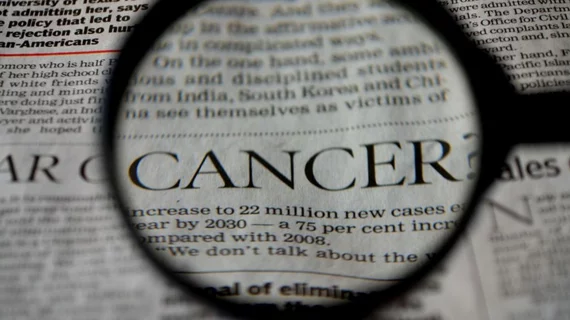CV programs struggling to keep up with growing demand for cardio-oncologists
Cardio-oncology has emerged as an area of rapid growth in the medical community in recent years, owing in large part to an increasing population of cancer survivors. While cardiology departments are doing their best to keep up with the new patient demographic, the authors of a Journal of the American College of Cardiology paper suggest the demand for experienced cardio-oncologists continues to exceed supply.
In their review, part of JACC’s “topic of the week,” senior author Bonnie Ky, MD, MSCE, and colleagues explored how cardiologists could best meet the demand of a more complex patient population: aging cancer survivors. Though experts estimate there will be 20 million cancer survivors by 2026—half of them 70 years old and up—an ACC survey from 2015 identified a paucity of training programs in the field.
“The number of CV specialists in cardio-oncology in the United States does not meet the healthcare needs of the rapidly expanding population of patients on cancer treatment with emerging or pre-existing CV disease and cancer survivors experiencing the long-term adverse effects of therapy,” Ky, an associate professor of medicine and epidemiology at the University of Pennsylvania and editor-in-chief of the ACC’s newest journal, JACC: CardioOncology, and co-authors said.
“Moreover, the vast majority of CV training programs provide limited exposure of the field of cancer therapeutics and its impact on CV health, exacerbating the unmet need for CV professionals in cardio-oncology.”
Ky et al. said there’s been a notable response to the increasing demand for cardio-oncology care. The authors conducted a survey that found 51% of accredited general cardiology fellowship programs are part of institutions that provide dedicated cardio-oncology services—up from 27% in 2014. An additional 33% said they were planning to add such services “in the near future.”
Although a little over half of cardiology programs seemed to offer some form of cardio-oncology education in their core curriculum, Ky and her team said just nine of those institutions offered training opportunities specific to cardio-oncology. Seeing as how cardio-oncology specialists are involved in all aspects of care for cancer patients—from addressing the cardiotoxic potential of certain cancer therapies to managing long-term risks and selecting patients’ treatment regimens—that’s a significant gap.
A number of industry initiatives have stressed cardio-oncology in recent years, including live courses at meetings, online resources and clinical practice guidelines. JACC: CardioOncology is expected to publish its first issue this fall.
Ky et al. said an ideal training program in cardio-oncology would incorporate core aspects like cancer therapy and radiation-induced cardiotoxicity, multimodality imaging, immunotherapy, vasculotoxic treatments, management of arrhythmias and dysautonomias, and arterial and venous thromboembolic events associated with cancer. Still, they recognized significant barriers to such a program, including lack of funding, lengthy accreditation processes and formalized curriculum.
“In four years, the number of cardio-oncology training programs has doubled; a testament to the rising interest in the field and the recognition of the healthcare needs of a fast-growing segment of patients,” the authors wrote. “Given the highly specialized nature of the field, it may be necessary to establish cardio-oncology as a universally recognized subspecialty of cardiology and oncology, similar to heart failure, imaging and preventive cardiology.”
Related Cancer Therapy Cardiotoxicity Content:
Succeeding with Cancer: Using Imaging to Avoid Treatment-induced Heart Failure
Providers must rethink traditional imaging approaches to prevent cardiotoxicity in cancer patients
Machine learning predicts drug cardiotoxicity
Prior cardiotoxicity linked to 30% increased risk of CHF during pregnancy
CV outcomes underreported in pivotal anticancer trials
CDK2 inhibitors protect cancer patients from anthracycline-induced cardiotoxicity
Genetic variants could be key to identifying chemo-induced cardiotoxicity
T2 mapping may uncover cardiotoxic marker early enough to prevent heart failure
Some chemo drugs might be more heart-safe than others
Cardiac MRI-derived T2 mapping may help heart failure patients
Genetic variant linked to chemotherapy-induced cardiomyopathy
Study calls for better collaboration between cardiologists, oncologists
Cardiac monitoring may protect high-risk breast cancer patients against heart failure

